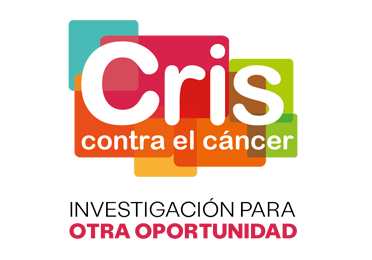
Precision medicine in oncology is rapidly evolving and increasingly entering into clinical practice. The use of new diagnostic tools and genomic tests that reveal the mutational landscape of individual cancers facilitates the more precise and tailored management of disease.
Anti-cancer medicines impacting on DNA damage and repair, such as platinum salts and PARP inhibitors respectively, are effective in patients with deficient DNA repair mechanisms. The most frequent defects in DNA repair associated with breast and ovarian cancers are germline mutations in BRCA1/2.
An Opinion Leader Paper (1) in the open access publication of the European Society for Medical Oncology (ESMO), ESMO Open, first-authored by Benedetta Pellegrino, ESMO Translational Research Fellow at VHIO’s Experimental Therapeutics Group directed by Violeta Serra – also co-author of the article – addresses the question as to whether genomic tests better guide clinical decision making.
Although BRCA1/2 mutation and prior platinum sensitivity is a robust predictor of response to PARP inhibitors, efforts have been made to identify more patients that may benefit from these anti-cancer agents. For this reason, as discussed by Benedetta and her other VHIO co-authors, Joaquin Mateo, Principal Investigator of Prostate Cancer Translational Research Group, and Judith Balmaña, Principal Investigator of our Hereditary Cancer Genetics Group, functional tests that quantify the DNA repair deficiency of a tumor or identify other mutations in the pathway could help. The so-called homologous recombination deficiency (HRD) tests are named according to the respective DNA repair pathway deficiency.
Tumors with HRD exhibit a distinctive mutational pattern. Large genomic aberrations are frequently detected, including big insertions and deletions which are known as genomic scars.
Speaking to VHIO Communications, Benedetta said, “There are currently two main approaches to detect the presence of HRD that have been used in clinical trials. First, the scoring of genomic scars, and second, sequencing panels to detect point mutations in genes involved in the particular HR repair pathway.”
The identification of an HRD-positive test indicates a high probability of sensitivity to platinum salts and PARP inhibitors in ovarian and breast cancers. An important limitation of these tests however, is that the analysis of genomic scars does not capture a common feature of tumor evolution. Secondary mutations in BRCA1/2 have been shown to restore HR and have been associated with resistance to these therapies, without removing the underlying scars present in the genome. These tumors consequently show as false positive in HRD genomic testing.
On the other hand, assays evaluating the functionality of HR components do efficiently discriminate between proficient and deficient HR machinery and pinpoint both resistant and responsive tumors, respectively.
In view of these considerations, the question in the clinic now is whether genomic tests can facilitate patient selection of those who may benefit from PARP inhibitors, beyond a BRCA mutation or platinum sensitivity.
Current evidence has shown that in ovarian cancer patients, HRD genomic scars correlate with the magnitude of PARP inhibitor benefit in the maintenance setting upon responding to platinum-based chemotherapy. In breast cancer, they are also predictive of response to DNA damaging agents in the neoadjuvant setting. Nevertheless, HRD genomic scars performed in the archival tumor do not correlate with response in advance disease, probably because of tumor evolution.
“Functional biomarkers assessing the activity of DNA repair pathways are more likely to have a greater impact on diagnosis and prediction of sensitivity to PARP inhibitors. As an example, our group has previously shown that the detection of RAD51 loading onto DNA is more sensitive and specific to predict PARP inhibitor response in preclinical models as well as patient samples than the HRD test,” (2,3), observed Violeta Serra.
“Functional HRD tests including the RAD51 assay might signpost new therapeutic opportunities for patients whose underlying deficiency is beyond BRCA1/2 alterations. The prospective validation in the clinic and the large-scale applicability of this approach is therefore warranted,” concluded Judith Balmaña.
###
References:
2) Cruz C, Castroviejo-Bermejo M, Gutiérrez-Enríquez S, Llop-Guevara A, Ibrahim YH, Gris-Oliver A, Bonache S, Morancho B, Bruna A, Rueda OM, Lai Z, Polanska UM, Jones GN, Kristel P, de Bustos L, Guzman M, Rodríguez O, Grueso J, Montalban G, Caratú G, Mancuso F, Fasani R, Jiménez J, Howat WJ, Dougherty B, Vivancos A, Nuciforo P, Serres-Créixams X, Rubio IT, Oaknin A, Cadogan E, Barrett JC, Caldas C, Baselga J, Saura C, Cortés J, Arribas J, Jonkers J, Díez O, O’Connor MJ, Balmaña J, and Serra V. RAD51 foci as a functional biomarker of homologous recombination repair and PARP inhibitor resistance in germline BRCA-mutated breast cancer. Ann Oncol. 2018 May 1;29(5):1203-1210.
3) Castroviejo-Bermejo M, Cruz C, Llop-Guevara A, Gutiérrez-Enríquez S, Ducy M, Ibrahim YH, Gris-Oliver A, Pellegrino B, Bruna A, Guzmán M, Rodríguez O, Grueso J, Bonache S, Moles-Fernández A, Villacampa G, Viaplana C, Gómez P, Vidal M, Peg V, Serres-Créixams X, Dellaire G, Simard J, Nuciforo P, Rubio IT, Dientsmann R, Barrett JC, Caldas C, Baselga J, Saura C, Cortés J, Déas O, Jonkers J, Masson JY, Cairo S, Judde JG, O’Connor MJ, Díez O, Balmaña J, and Serra V. A RAD51 assay feasible in routine tumor samples calls PARP inhibitor response beyond BRCA mutation. EMBO Mol Med. 2018 Dec;10(12).








